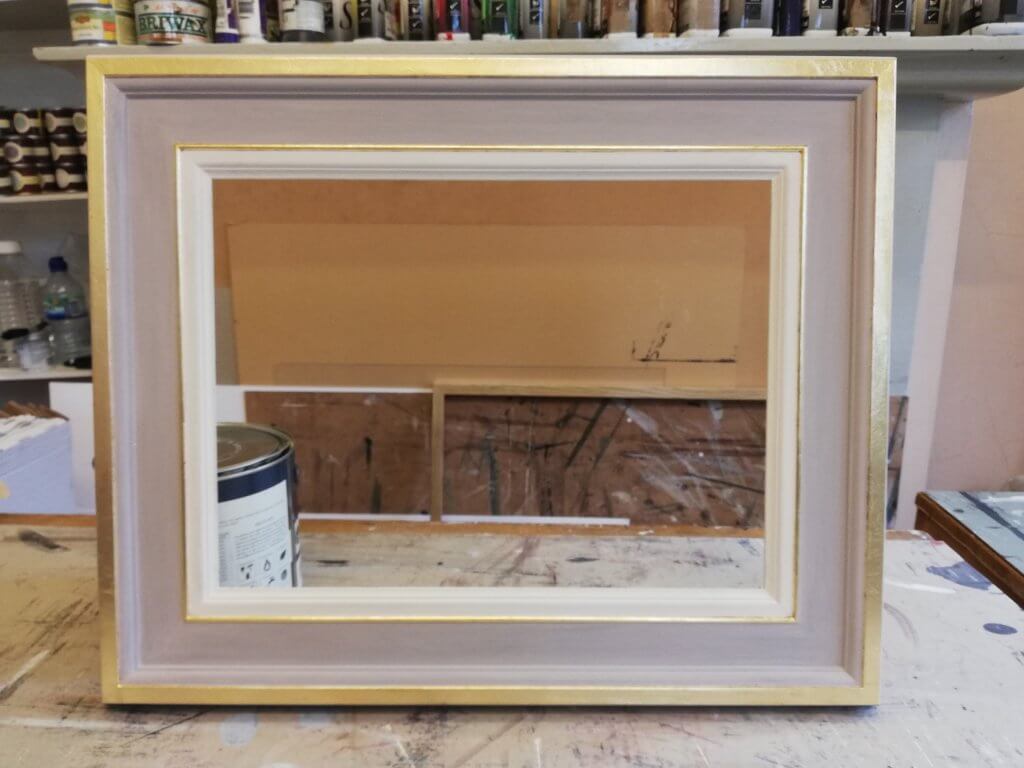
Hand Gilded frames have for centuries been the frame of choice for the display of prized art by the influential elites throughout Europe. It is easy to understand why as a gilded frame provides a glittering and distinctive setting which celebrates the value and quality of a beautiful piece of art. There is a long history of different styles in Gilded Frames, from the Renaissance through to contemporary frames for modern masters. Making gilded frames means keeping alive the ancient craft of gilding, which we are proud to do today.
We have a large range of finishes available to us so that we can produce hand gilded frames that reflect your tastes and the style and period of your artwork. Our craftsmen use a number of different metal leafs including warm and cold golds up to 23.5ct, white golds, and coppers. These materials can then be combined with finishing techniques that ‘age’ the gold to suit your tastes.
Making and finishing Gilded Frames is a very complicated and skilled job that has been practised by craftsmen for centuries. There are different techniques, but all involve a significant amount of skilled hand craftwork: after the frame is made, the surface has to be prepared with gesso and rubbed down by hand, often many coats are required to get the perfectly smooth surface required. The surface is then coloured before gilding can take place. The choice of colour is vital to the finish because the leaf is so thin some of this primer can be seen through the metal. (In fact, the leaves are often hammered until they are a single atom thick). After the primer is applied, usually a yellow or red clay bole, the gold leaves are applied with a water size (glue). Gilded Frames are then burnished to add shine and hardness to the gold. Finally, finishing takes place which may include, for example, distressing the gold or antiquing if these are the desired effects.
We also use gilding in the creation of our mirrors. We use a process called églomisé to gild onto glass. This technique can add elegance and luxury to your mirrors. Alternatively, we use oil or water gilding for mirror frames, as described above, depending on the qualities desired.